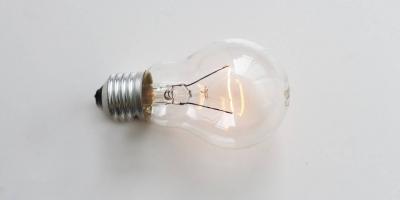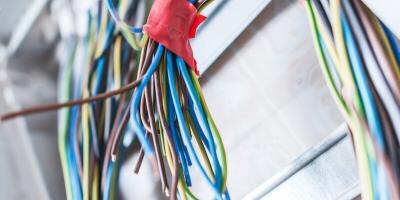What is Electrical Current?
Electrical current refers to a measure of the total amount of electrical charge moved per unit of time. Simply put, it indicates the flow of electrons via a conductive material like a metal wire. The amount of electrical current is measured in “amperes.”
How Electrical Current Flows
For most of us, electricity is a secretive force that magically shows up whenever we plug in a device or switch on the lights. We do not take time to think about the science of how electricity flows. Though very complex, you can easily understand the basics of electrical current or flow once you learn some important functions and terms.
To help you understand even better, you can associate how electricity flows through a metal wire with how water flows through pipes. Here are some terms commonly connected to electrical current:
ElectronsHow electricity flows through a wire is indeed a flow of electrons. Electrons refer to negatively charged sub-atomic particles. The wire here is a conductor through which electricity travels through.
When electrons move from one atom to the other through an electrical conductor then we get the current (flow). These electrons are either negatively (-ve) or positively (+ve) charged.
Positive electrons are attracted to negative electrons, and vice versa. This means at an atomic level, a –ve electron will move from one atom to the next. As a result, another –ve electron will move from the 2nd atom to the 3rd atom, and the trend continues. This movement of negative electrons from one atom to the other is called electrical flow.
CurrentAfter knowing what electrons are, the other point is to talk about current. Current refers to the flow of electrons in an electrical system or circuit. Likewise, you can connect current with the volume or quantity of water that flows via a water pipe. As touched earlier on, electrical current is measured in amps (amperage).
Electrical current is grouped into two: direct current and alternating current or DC and AC in short. In general, direct current refers to the form of electricity that batteries provide such as a vehicle’s electrical system. On the other hand, alternating current is the form of power that runs outlets, appliances, and lights at home.
Hydro-power and solar are renewable energy sources that produce direct current power. The DC electricity is then converted into alternating current ready for home use.
OhmsThe resistance of the flow of electrons via a conductive media is measured in ohms. If the resistance is low, then the flow of electrons will be high, and vice versa. The resistance generates a specific amount of heat in the circuit. Think about how a hair dryer blows out hot air. The heat produced is due to the resistance in its inner wiring. Another example is an incandescent light-bulb. It heats up and glows with light due to the resistance in its small wires.
Wattage (Watts)The rate at which electrical power is consumed or dissipated is indicated in as wattage. This is the amount a utility power company reads through an electric meter. Wattage is measured in 1,000 watt-hours or kilowatt-hours. That is how a utility company bills you.
Every electrical system like a kitchen appliance or lighting has its own rate of consumption measured in wattage. As an illustration, a 100-watt lighting bulb that runs for 10 hours consumes one kilowatt-hour of electrical power.
Watts, volts, and amps are all mathematically related. This means:
Watts = Volts x Amps
If for instance, an electrical appliance is rated at 10 amps and 120 volts, then it will consume 1,200 watts when in use. Following the above formula, that gives you: 120 volts x 10 amps = 1,200 watts
VoltageSpeaking of voltage, it refers to the pressure of electrons in an electrical system. Also known as the electromotive force, the voltage is the same as the pressure of water in a pipe.
All these terms are related. At least now you have an idea of what electrical current is and how it flows. So, the next time you switch the lights on or plug in an appliance, you know a bit about the electrical magic.
The appliances we use at home are fed by different voltages. If you have no idea of which outlet and light fixture to use at home, you can seek the services of a professional. At Gordon’s Powers, we are experienced in all matters about electrical appliances current. Our qualified electricians are equipped with the knowledge of safely handling electricity and providing superior electrical work.










